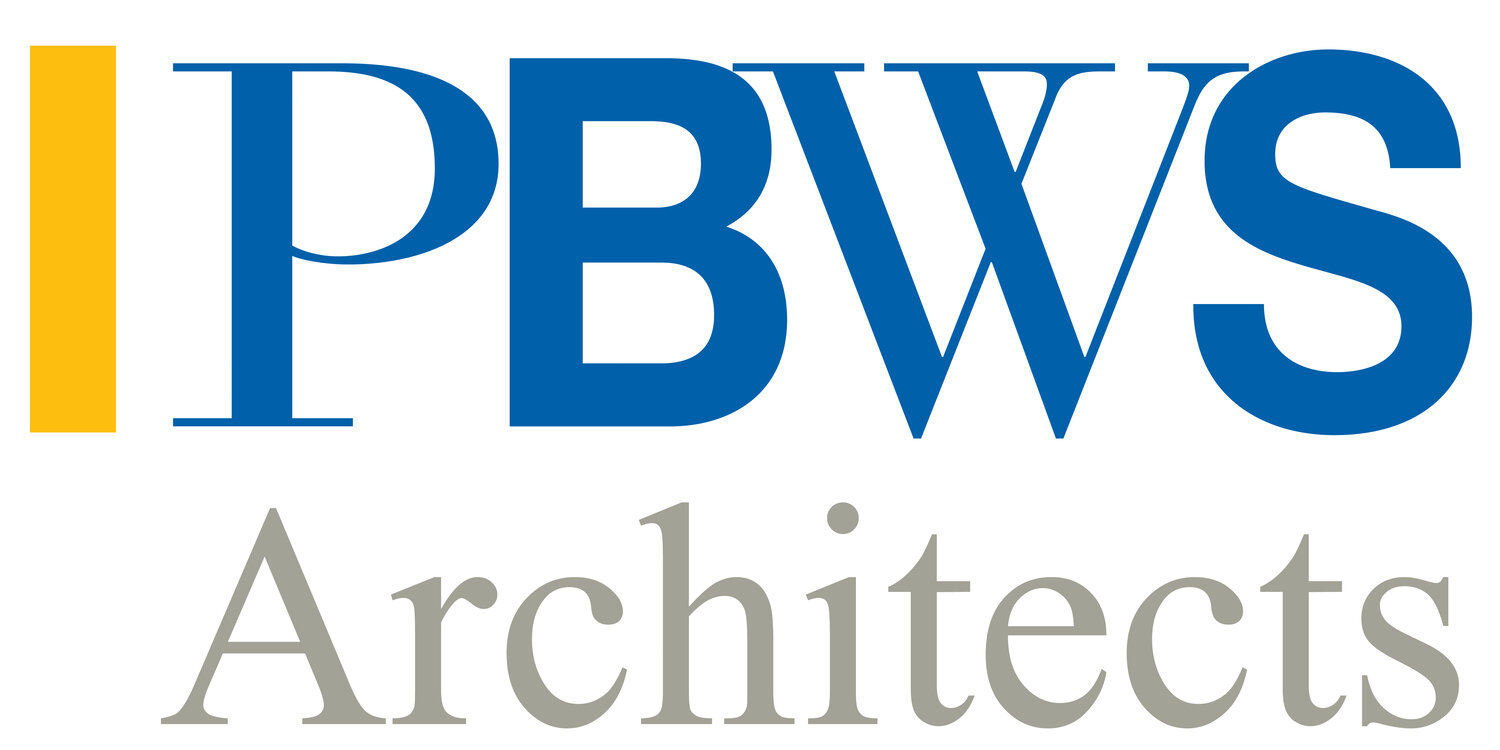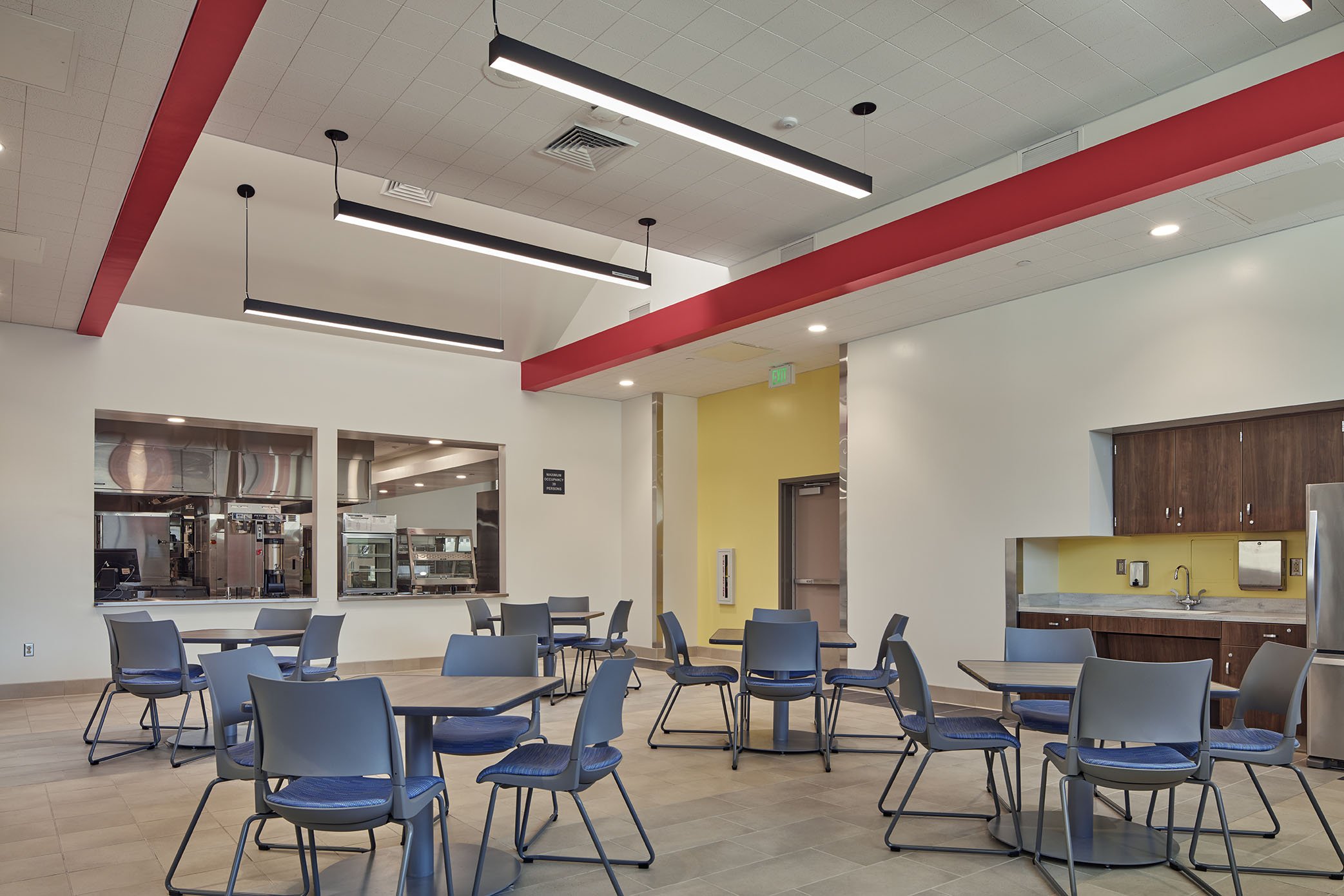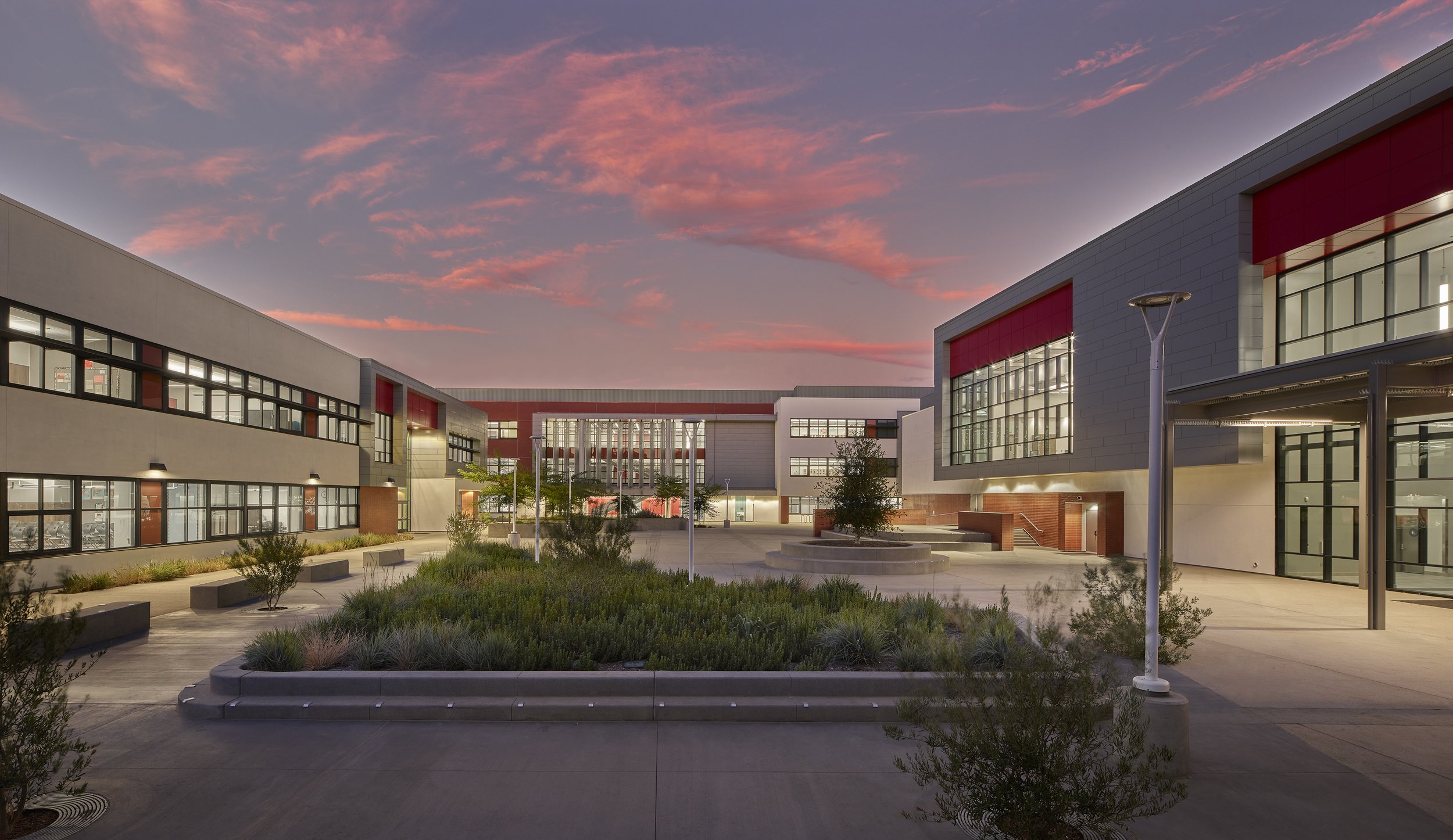LOS ANGELES UNIFIED SCHOOL DISTRICT
Grover Cleveland Charter High School
Comprehensive Modernization Project
Reseda, California
Grover Cleveland High School was designed and constructed during the post-war building boom that transformed Los Angeles. Like the surrounding neighborhoods that sprouted from the farms of the San Fernando Valley, the high school’s design reflected the mid-century sensibilities of the time. The original campus plan is characterized by single-story classroom buildings with low-slope roofs laid out in a finger-plan united by a central covered walkway/circulation spine, a planning motif replicated throughout the burgeoning communities of Southern California.
Completed in 1961, the school was planned for 1,500 students. By 2017 when planning for the comprehensive modernization of the campus began, the enrollment had grown to over 3,200 students. The facilities and grounds were impacted by overcrowding and in need of a major expansion to address ongoing educational needs.
Los Angeles Unified School District’s campus master plan called for the design and construction of seven new buildings adding over 176,000 GSF (more than doubling the square footage of the existing facilities) for performing arts, general & special education classrooms, science labs, drafting & engineering labs, multi-media classroom, food service and dining, childcare, and campus support services. The program also called for the modernization of two existing classroom buildings, a voluntary seismic upgrade of the gymnasium, and a refresh of finishes throughout the existing campus buildings.
The design-build team’s solution focused on four key goals:
1) respecting the campus’ mid-century design and site planning;
2) creating environments that promote and foster relationship building through serendipitous social interaction, collaboration, extracurricular activities, and self-directed problem solving;
3) employing the tenets of biophilic design to improve cognitive function, psychological and physiological health; and
4) emphasizing security, ease of maintenance, durability, and long-term performance.
Integrating Existing and New
The massing of the program was arranged to reinforce the original finger-plan by extending the existing quad across the central covered walkway and creating a new circulation spine parallel it. The new buildings are organized around the expanded quad with the largest building placed near the back of the site and the two-story buildings stepping down the mass as they merge with the existing single-story campus.
The use of a complimentary palette of brick, steel, stucco, and metal-framed glazing that draw from the high school’s original mid-century finishes adds to the feeling of visual integration. The new buildings are articulated in simple, geometric volumes expressed through an asymmetrical, rhythmic composition. The result is a composition of buildings that, while doubling the existing square footage of the school, do not overpower it.
Environments for Building Relationships
As the new heart of the campus, the Quad provides multiple locations for casual social interaction and collaboration through a variety of seating options, a tree-shaded outdoor classroom, an elevated performance stage, a venue for school dances and concerts, and a covered pre- and post-function event space adjacent to the Performing Arts Lobby. It is further activated by the programs of the adjacent buildings such as the student store, engineering lab yard, student dining, and entrance lobbies. This multi-functional, amenity-rich outdoor gathering space expands the existing landscaped open area to create a large space capable of accommodating the entire student body.
The design team created four different areas for students to use during the lunch period, a key component of relationship-building activities in school. Taking advantage of California’s mild climate, they range from totally enclosed and conditioned to exterior with partial shade to exterior with full, deep shade to exterior with vegetated shade. Differing levels of environmental protection allows students to experience thermal variability across the campus, a biophilic tenet. Permitting student choice by providing diverse environments encourages self-determination.
Interior circulation spaces were also designed for social interaction, including furnished breakout spaces in the lobbies of the classroom buildings, alcoves with benches and lockers along the corridors, and seating areas beneath stairs. In the three-story classroom building, a section of the science labs was offset to create a 2-story atrium and stair resulting in an inter-connected Science Village. Breakout areas within the atrium provide opportunities for small group work, tutoring, homework, and socialization within the science-focused environment. Creating quality places outside the classroom for positive social interactions and activities contributes to students’ sense of belonging, which is associated with higher student achievement.
Biophilic Design
The science atrium is topped with a translucent skylight which provides dynamic and diffuse daylight, a tenet of biophilic design. To this end vision glazing and skylights are provided throughout corridors and lobbies. Natural daylight is also provided to every classroom.
Vision glazing in classrooms and corridors, dining spaces and lobbies also provides a visual connection to nature. The existing mature tree canopy and new raised and bio-filtration planters provide green views from buildings. Landscaping decisions focused on providing shade and softening edges by creating planting beds that also provide seating opportunities.
Material connections with nature are provided internally as well, not through planting, but through the use of wood finishes. The multi-purpose performing arts room incorporates wood veneer in the acoustical treatment. Casework throughout classrooms is finished with woodgrain plastic laminate or wood veneer. And linear metal ceilings in the corridors and lobbies use a woodgrain finish.
The circulation design also incorporates places for refuge and prospect, dual tenets of biophilic design. Alcoves in corridors, breakout spaces, and seating areas under stairs provide places for students to withdraw without being cut off from the larger social setting. From these areas of refuge as well as at lobby railings and corridor windows, students can survey long distances to observe campus activities and connect with nature.
Long-term performance
While achieving programmatic goals, the project also had to meet the District’s stringent requirements for security, ease of maintenance, and durability. Vulnerable finishes such as wood veneer and metal panels were held above ten feet to keep them out of reach. Protection such as anti-graffiti coating, corner guards, and security glazing were provided below ten feet. And finishes like linoleum, ceramic tile, and high-impact gypsum board were selected for their long-term durability and maintainability.
The comprehensive modernization of Grover Cleveland Senior High School transforms the 1961 campus into a 21st century learning environment that respects its mid-century roots while strengthening campus life. The project strengthens the implementation of contemporary learning pedagogies in specialized programs such as media arts, drafting, digital humanities, engineering, science, theater, music, and art, that had previously been restricted due to a shortage of space.






























